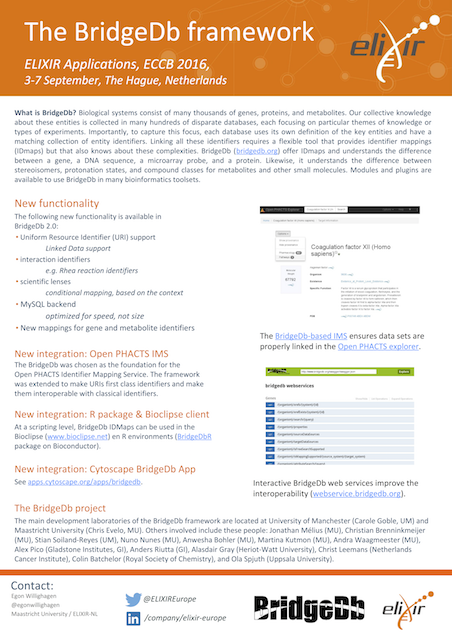| Authors: | Egon Willighagen, Jonathan Mélius, Brenninkmeijer Christian, Stian Soiland-Reyes, Anwesha Bohler, Martina Kutmon, Andra Waagmeester, Alex Pico, Anders Riutta, Alasdair Gray, Christ Leemans, Colin Batchelor, Ola Spjuth, Nuno Nunes, Chris Evelo and Carole Goble |
|---|
| Abstract: | What is BridgeDb? Biological systems consist of many thousands of genes, proteins, and metabolites. Our collective knowledge about these entities is collected in many hundreds of disparate databases, each focusing on particular themes of knowledge or types of experiments. Importantly, to capture this focus, each database uses its own definition of the key entities and have a matching collection of entity identifiers. Linking all these identifiers requires a flexible tool that provides identifier mappings (IDmaps) but that also knows about these complexities. BridgeDb (bridgedb.org) offer IDmaps and understands the difference between a gene, a DNA sequence, a microarray probe, and a protein. Likewise, it understands the difference between stereoisomers, protonation states, and compound classes for metabolites and other small molecules. Modules and plugins are available to use BridgeDb in many bioinformatics toolsets. |
|---|
| Venue: |
15th European Conference on Computational Biology (ECCB),
The Hague
|
|---|
| Published: | 8 Sep, 2016 |
|---|
| DOI: | 10.7490/f1000research.1113101.1 |
|---|


